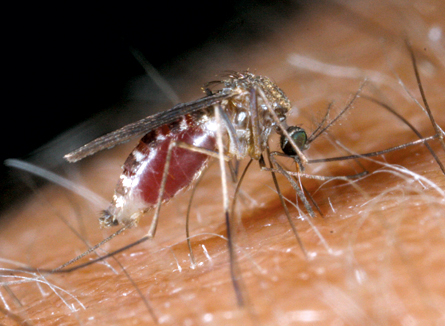Mild winters appear to speed annual menu changes for disease-carrying mosquitoes. And the revised biting patterns might play an overlooked role in worsening the risk of brain infections in people and horses.

The mosquito Culex erraticus spreads the virus that causes eastern equine encephalitis. It’s an uncommon but often lethal disease, killing about half of the people who contract it and virtually all the infected horses. Populations of C. erraticus, like some other mosquitoes, start their biting season targeting mostly birds but end up focusing on deer, horses, people and other mammals.
The timing of when the insects shift from birds to mammals varies a lot from year to year among C. erraticus mosquitoes in Alabama, says entomologist Nathan Burkett-Cadena of the University of South Florida in Tampa. He and his colleagues discovered this variation after eight years of trapping mosquitoes and genetically identifying which bird and mammal species had provided the blood the insects were digesting. In years such as 2007, mosquito populations went mammalian in May or June, but in 2003 waited until August.
“This is the first time that anyone has documented strong year-to-year variation in the timing of the host shift,” Burkett-Cadena says.
The severity of the previous winter turned out to explain most of the variation in timing, Burkett-Cadena and his colleagues report online March 7 in Biology Letters. Milder winters typically meant earlier shifts, whereas harsher winters more often led to delayed shifts.
Birds serve as a reservoir of the virus, and mosquitoes pick it up when biting them. So shifts to mammal targets matter in determining the timing and intensity of mosquito-borne diseases in any particular year, according to earlier work on menaces such as West Nile virus. For C. erraticus and eastern equine encephalitis, timing of the shift isn’t the only factor, Burkett-Cadena says. Yet “this is a piece of the puzzle and it’s a very large piece.”
For understanding the bird/mammal shift, “this paper is a great start,” says Laura D. Kramer of New York State Department of Health’s Wadsworth Center in Albany. Next she’d like to know what other factors, such as the density of mosquito populations, also nudge the timing of the bite changes.
Biting is a motherhood thing among mosquitoes, as only females bite and only on the two or three occasions in their lives when they need a huge, high-protein meal to meet the demands of laying eggs.
Just why the previous winter might change an expecting mosquito’s diet may have something to do with bird nesting, Burkett-Cadena speculates. An adult bird sitting on eggs or chicks too young to fly should make convenient targets for a blood-seeking mosquito. After mild winters, though, the great blue and yellow-crowned night herons that the mosquitoes favor tend to nest early. After the brood has fledged, the birds may not be as convenient a target so the female mosquitoes, now carrying the virus, may start to focus on mammals.






